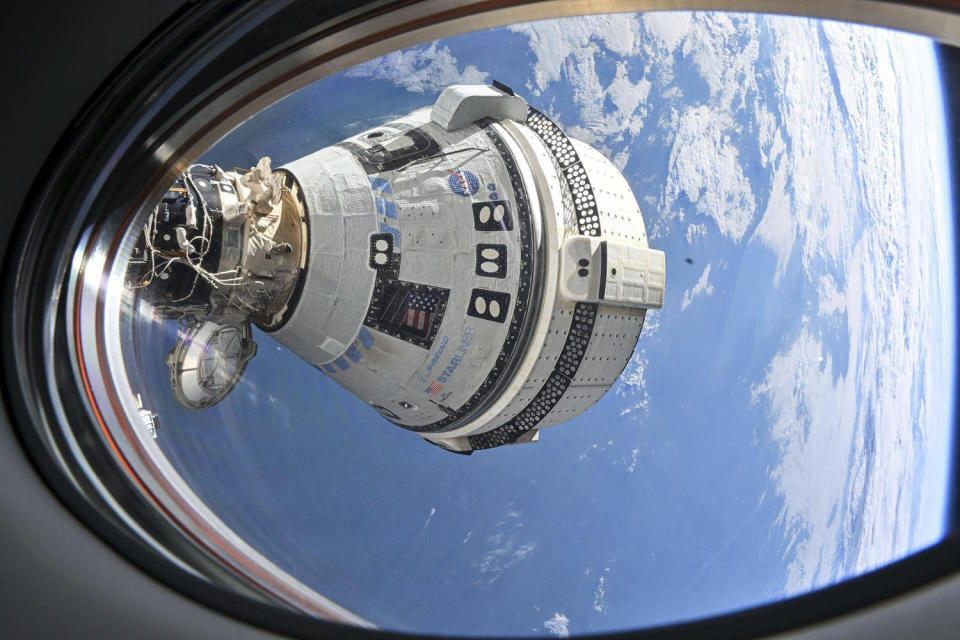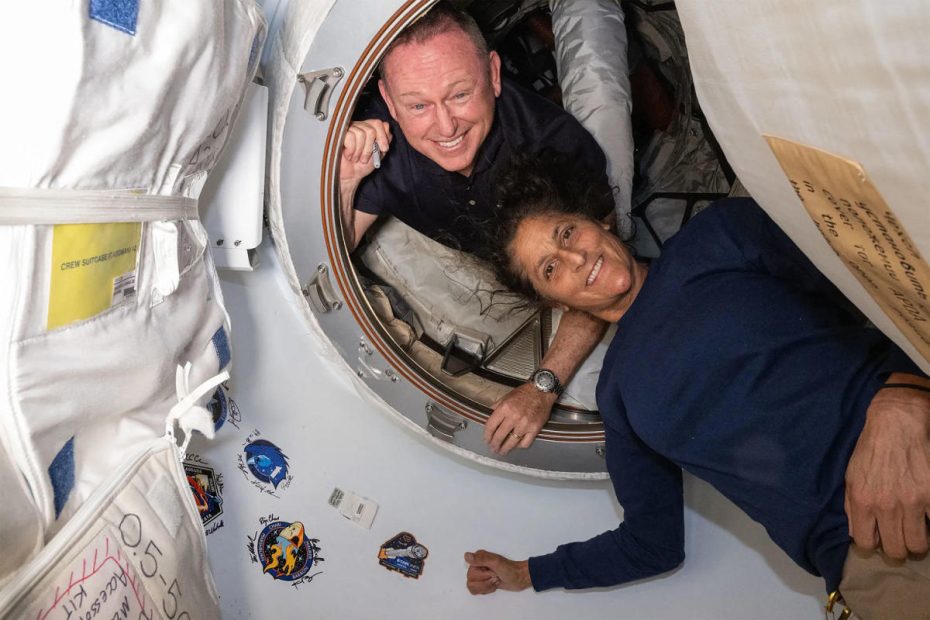NASA will tap SpaceX to help bring home two astronauts who have been stranded on the International Space Station since early June after their Boeing spacecraft encountered several problems during flight, the agency said Saturday.
The decision by astronauts Butch Wilmore and Suni Williams to hitch a ride back to Earth on a SpaceX Crew Dragon capsule, rather than the Boeing Starliner spacecraft they flew into orbit, ends months of speculation and suspense within the space agency over how — and when — the two crew members could return safely. The mission was scheduled to last about eight days.
“Space flight is risky, even in the safest and most routine ways, and a test flight is by its very nature neither safe nor routine. That's why the decision to keep Butch and Suni aboard the International Space Station and to bring the Boeing Starliner home unmanned is the result of a commitment to safety,” NASA Administrator Bill Nelson said at a news conference Saturday.
The Starliner drama has been a major setback for Boeing’s space ambitions, adding to a years-long struggle to get the capsule off the ground and keep pace with rival SpaceX. Even before Wilmore and Williams got started in June, the Starliner program was already more than $1.5 billion over budget and years behind schedule.
Top NASA officials, including Nelson, gathered Saturday at the agency's Johnson Space Center in Houston to conduct a formal investigation based on the results of tests conducted in space and on the ground.
Although the agency has finally decided how to bring the astronauts back, their return trip won't happen immediately. Instead, Wilmore and Williams will remain on the space station for about six months before flying home in February.
NASA said it is freeing up two seats on an upcoming SpaceX launch, known as Crew-9, that will bring a new rotation of crew members from the space station to the space station outpost. Carrying two astronauts instead of the planned four will allow Wilmore and Williams to fly back in the open seats at the end of the Crew-9 mission in February.
The Crew 9 flight is currently scheduled to depart from NASA's Kennedy Space Center in Florida on September 24.
The beleaguered Starliner capsule will return to Earth without a crew, according to NASA, probably sometime in early September.


Boeing said in a statement after the announcement: “We remain focused, first and foremost, on the safety of the crew and the spacecraft. We are executing the mission as defined by NASA, and we are preparing the spacecraft for a safe and successful unmanned reentry.”
Steve Stich, manager of NASA's Commercial Crew Program, said that while Boeing officials were confident in their spacecraft, the decision to go with SpaceX was unanimous among NASA officials.
“There was just too much uncertainty in the prediction of the thrusters,” Stich said. “If we had a model, [if] “We had a way to accurately predict what the thrusters were going to do during the undocking and during the de-orbit burn, during the separation sequence. I think we would have taken a different course of action.”
NASA’s uncertainty in recent weeks has been in stark contrast to Boeing’s public messaging. The aerospace company has said that tests conducted in space and on the ground indicated the Starliner capsule was safe to carry astronauts home.
Over the past month, Boeing officials have not participated in press conferences organized by NASA to discuss the Starliner mission. Boeing posted details about the flight's status on the company's website, but no mission updates have been posted since Aug. 2. In that statement from earlier this month, Boeing said it “remains confident in the Starliner spacecraft and its ability to return safely with crew.”
Wilmore and Williams arrived at the space station on June 6. As they approached the outpost, five of Starliner’s thrusters failed, causing a nearly hour-long delay in the docking process. Mission managers also discovered helium leaking from the capsule’s propulsion system — a problem that was known before the spacecraft launched but appeared to worsen during flight.
Engineers from NASA and Boeing spent weeks analyzing the problems using a test engine built for future Starliner flights. Mission managers also conducted two “hot fire” tests in space, firing the capsule's thrusters in short bursts while it remained attached to the space station.
Wilmore and Williams blasted off to the International Space Station on June 5 for the first crewed flight of Boeing's Starliner capsule. The mission, which was scheduled to last just over a week, was a crucial test flight for Boeing and served as the last major step before NASA could certify the Starliner spacecraft to regularly ferry astronauts to and from the space station.
It's still unclear how NASA will handle the certification process, and how the space agency will evaluate Starliner's performance during the crewed test flight.
SpaceX has been transporting NASA astronauts to and from the International Space Station since 2020.
Both Boeing and SpaceX developed their space capsules as part of NASA's Commercial Crew Program, an initiative launched in 2011 to support private companies in building new spacecraft to carry astronauts into low-Earth orbit after the agency's space shuttles were retired.
NASA Deputy Space Flight Administrator Jim Free praised the NASA and Boeing teams, saying the work done in recent months will be important for future missions.
“We are a learning organization,” he said. “We will learn from this effort so that our crews, who are at the top of the pyramid during these missions, and their families can continue to know that we did this and that we will always do our best.”
This article was originally published on NBCNews.com

